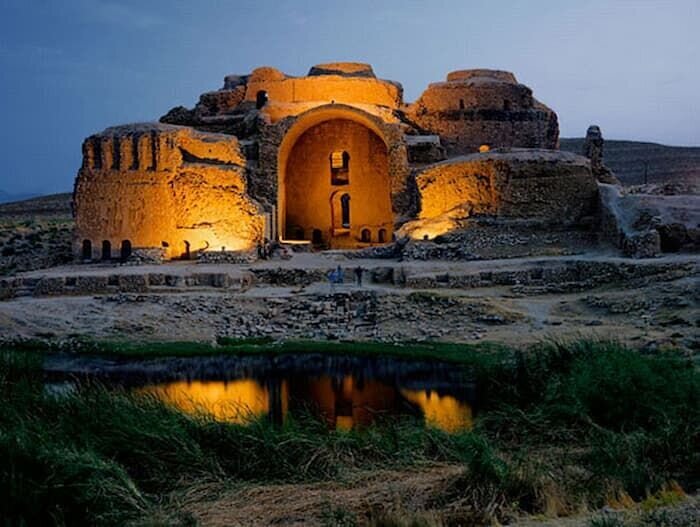Budget allocated for Sassanid Archaeological Landscape of Fars province

TEHRAN—Out of 4,300 billion rials ($4.7 million) credit allocated by the Oil Ministry for Fars province’s heritage, 3,700 billion rials ($4.1 million) has been earmarked for Sassanid-era sites.
According to Deputy Minister of Cultural Heritage Sadeq Zare’, the budget has been allocated to the several projects, some of which have been implemented and the rest are in the tender and contractor selection stage, IRNA reported.
Sassanid Archaeological Landscape of Fars province which was inscribed in UNESCO World Heritage List, includes eight monuments and petroglyphs and embossed patterns which are located in east of the province in three counties of Sarvestan, Kazeroun, and Firuzabad. It is a precious treasure for boosting the regional tourism.
The Dezh Dokhtar, Palace of Ardashir Papakan and Shahr-e-Gur in Firuzabad County, the Sassanid Palace in Sarvestan and the historical city of Bishapur, the Tang Chogan reliefs and Shapur Cave in Kazeroun County are the world heritage sites left by the Sassanids in Fars.
This Sassanid heritage, which is now under the management of the Sassanid Landscape World Heritage Site Unit, had been deprived of significant funds for restoration and strengthening of the site for several years, but with the approval of the budges, valuable conservation, restoration and tourism measures have begun in this landscape.
Zare’ explained that out of the whole budget, 1,500 billion rials has been allocated to Firuzabad Axis, 1,500 billion rials to Bishapur and the Tang Chogan, and 700 billion rials to Sarvestan.
He added that flooring has been completed in Tang Chogan, and part of the access road has been completed in the Bishapur complex.
The tender for the restoration and improvement of the architectural remains of the palaces of the ancient city of Bishapur has been concluded in the form of four contracts and will soon enter the implementation phase, he mentioned.
Regarding the latest status of the restoration and conservation of the Sarvestan Palace, he stated that the contractor for the strengthening and conservation projects of the Sarvestan Palace has been selected through a tender, and these workshops will soon be handed over to the contractors to begin the work.
He added that the implementation of the access road to facilitate visiting this ancient palace has also been completed, and other tourism infrastructure for this axis is also being planned.
Zare stated that a plan has been prepared to construct several sanitary fountains in the Sarvestan Palace complex, and the tender and contractor selection stages for this project will also be held soon.
The Sassanid epoch is of very high importance in the history of Iran. Under the Sassanids, Persian art and architecture experienced a general renaissance. Architecture often took grandiose proportions, such as some palaces located in Ctesiphon, Firuzabad, and Sarvestan, which are amongst the highlights of the ensemble.
Crafts such as metalwork and gem engraving grew highly sophisticated, yet scholarship was encouraged by the state. In those years, works from both the East and West were translated into Pahlavi, the language of the Sassanians.
The Sassanid archaeological landscape also represents a highly efficient system of land use and strategic utilization of natural topography in the creation of the earliest cultural centers of the Sassanid civilization.
UNESCO added an ensemble of Sassanian historical cities in southern Iran — titled “Sassanid Archaeological Landscape of Fars Region” -- to its World Heritage list. The ensemble comprises eight archaeological sites situated in three geographical parts of Firuzabad, Bishapur, and Sarvestan. It reflects the optimized utilization of natural topography and bears witness to the influence of Achaemenid and Parthian cultural traditions and Roman art that later made a significant impact on the architecture and artistic styles of the Islamic era.
KD
Leave a Comment